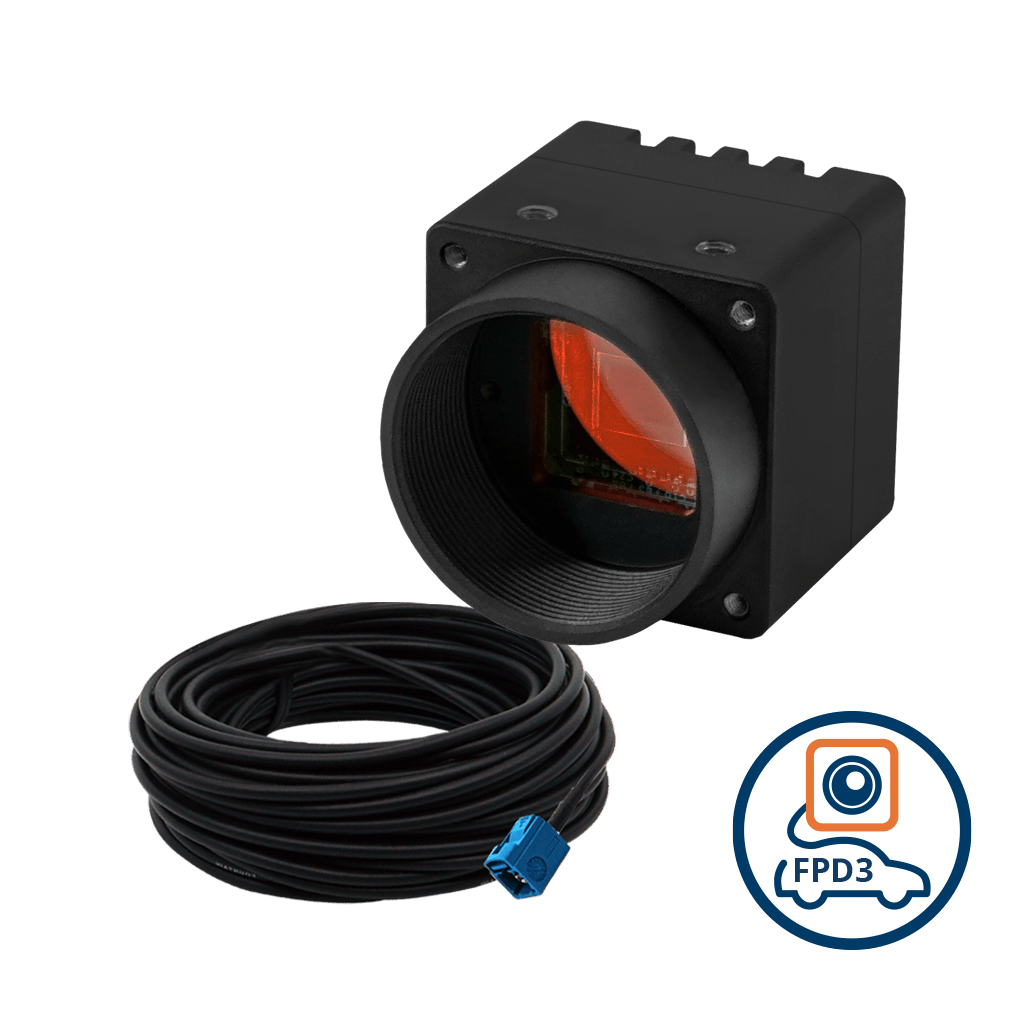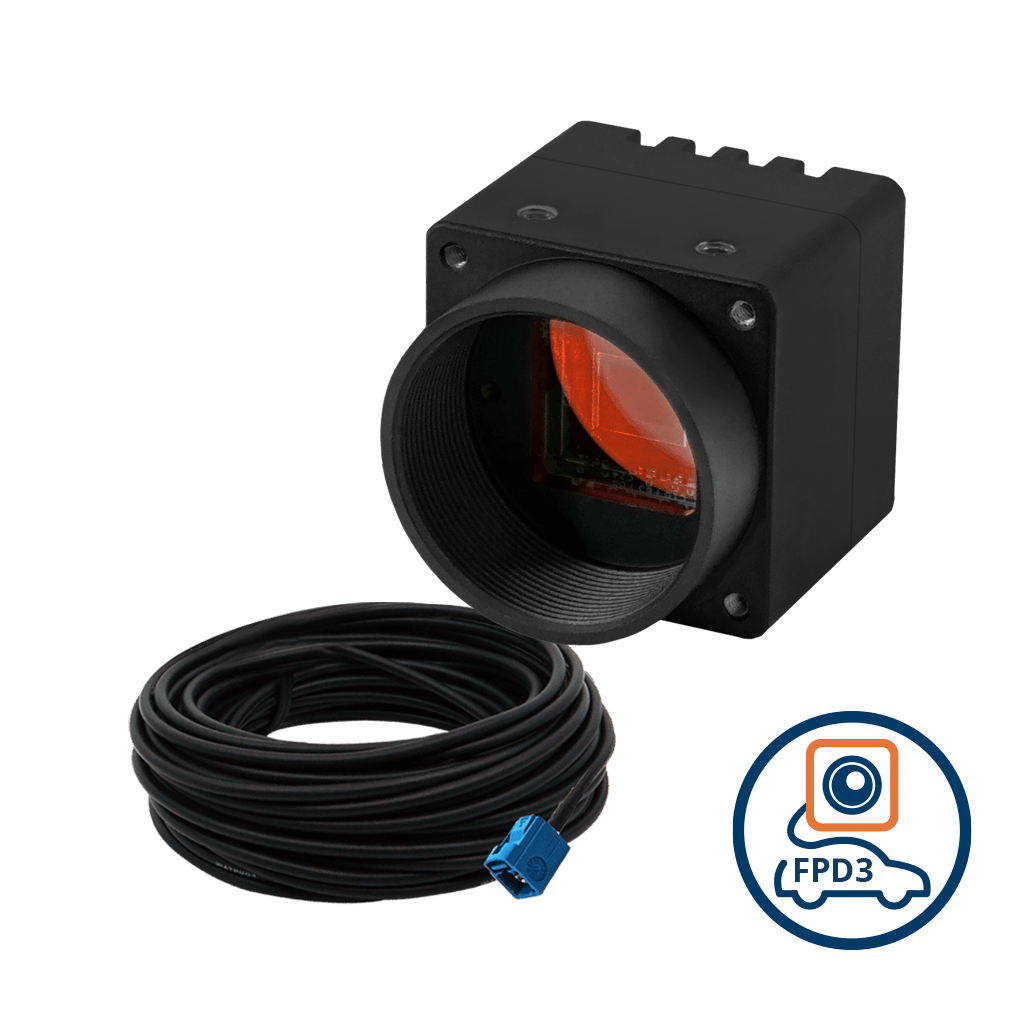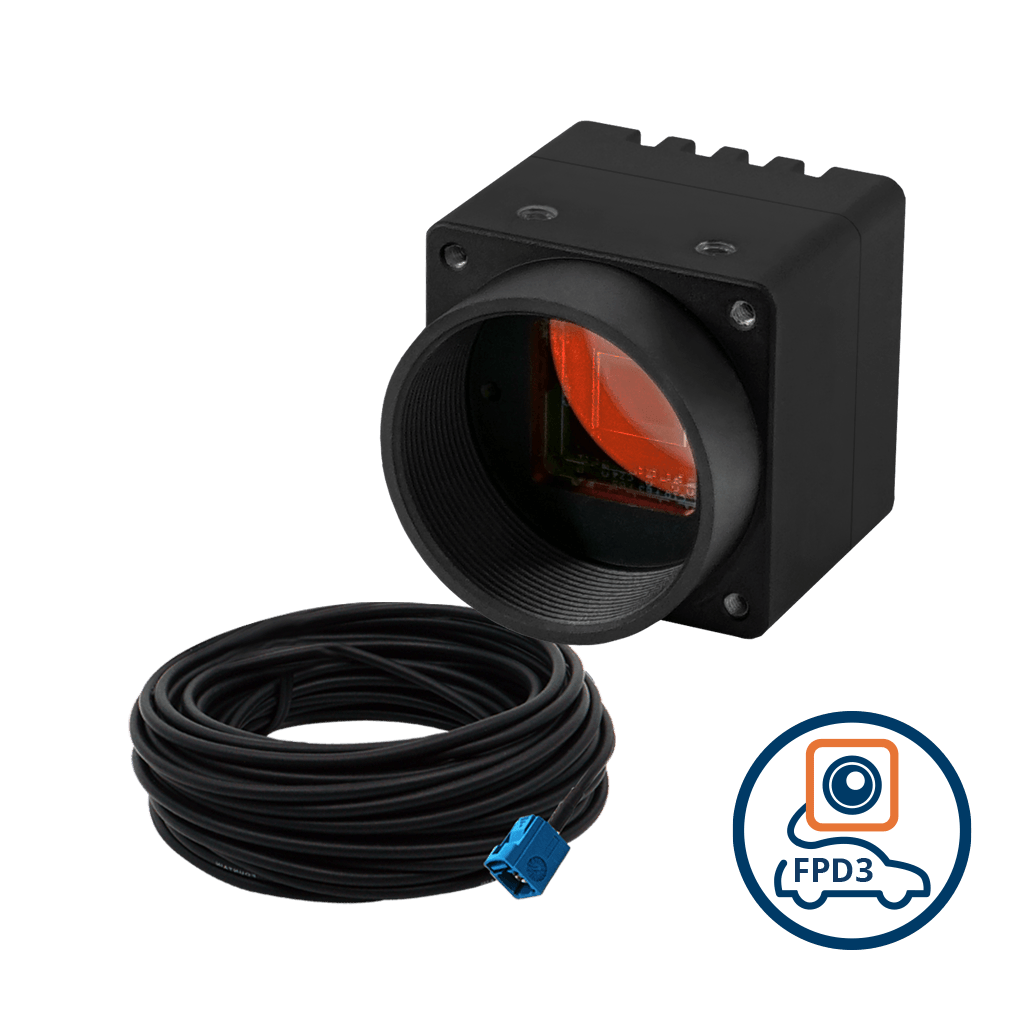High-resolution cameras in embedded vision systems have transformed how we think about technology and its uses. This change is primarily due to significant improvements in camera capabilities, enabling the capturing of incredibly clear and detailed images. As a result, this has expanded the potential applications for these systems and enhanced the accuracy and effectiveness of various processes in a wide range of industries.
The integration of computer vision technology into embedded systems, known as embedded vision, has progressed from basic, low-resolution functions to advanced systems that can comprehend and interpret the surroundings in greater detail. This progress has been greatly shaped by the introduction of high-resolution cameras, which act as the visual input for these systems. Improving image quality has allowed for more complex and refined uses, such as enhancing medical diagnostics with clearer and more detailed imaging.
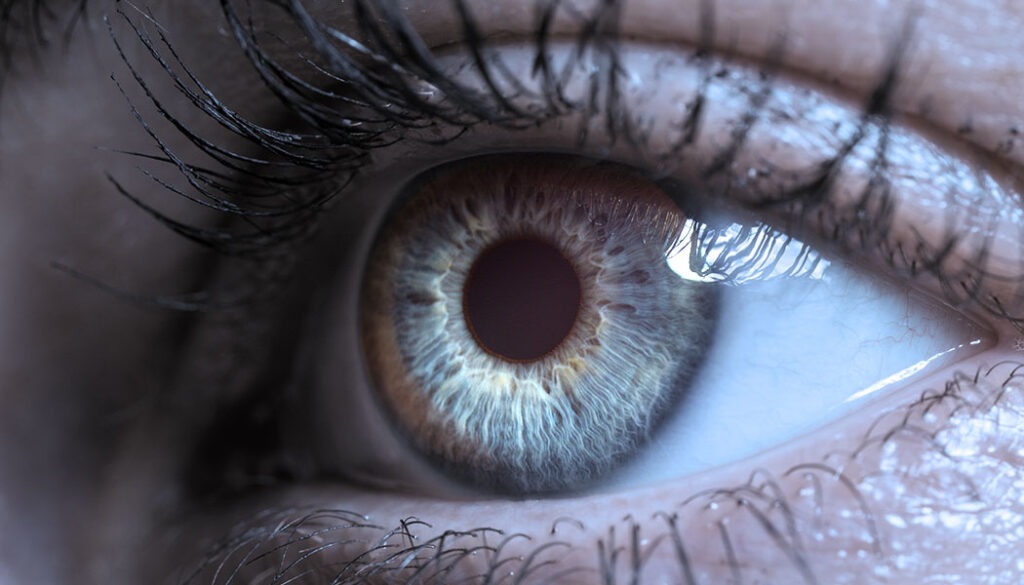
What are high-resolution cameras?
High-resolution cameras are known for their ability to capture images with a significantly high pixel density, resulting in greater detail and clarity compared to standard-definition cameras. The definition of “high resolution” is ever evolving as technology advances, constantly pushing the limits of what qualifies as high resolution. For practical purposes, cameras with a resolution of 5 megapixels (MP) or higher are often considered a high resolution in embedded vision, although this may vary depending on the application and the environment where the camera is used.
Why are high-resolution cameras preferred today?
Here’s a breakdown of why high-resolution cameras became so important:
Demand for high-quality visual content
Modern embedded vision systems rely on high-quality images and videos to perform their functions. This data is required for both manual as well as automated analyses. Devices that use AI and ML algorithms to interpret visual data cannot compromise quality. Given that resolution is one of the factors that determine the output quality, embedded cameras of today need to offer high resolution as a key feature.
For example, traffic monitoring devices of the past used cameras with resolutions ranging from 1MP to 5MP. However, some new-gen smart traffic systems today demand a resolution of 8MP or higher.
Technological advancements supporting high-resolution
Recent technological advancements have greatly improved the capabilities of processors found in cameras and computing devices. These advanced processors can now handle complex data processing required for high-resolution images and videos, resulting in faster image processing, reduced noise, and superior overall image quality even at extremely high resolutions.
With the development of high-bandwidth interfaces like MIPI, GMSL 2, and FPD-Link III, and as well as the expansion of 5G networks transferring and streaming large, high-resolution files has become much quicker and easier.
In addition, recent advancements in storage technology, such as solid-state drives (SSDs) and cloud storage solutions, have made storing and retrieving large, high-resolution files easier. Further, with the increasing availability of high-resolution displays like 4K and 8K monitors, TVs, and industrial PCs, there is a growing demand for high-quality content that can maximize the capabilities of these screens.
Examples of high resolutions sensors in TechNexion's portfolio
TechNexion offers a diverse range of imaging solutions tailored to various applications. Each sensor in its portfolio is designed with specific features to cater to different requirements in imaging technology. Let us look at the features of the high-resolution sensors in TechNexion’s portfolio.
AR1335
The AR1335 digital image sensor is a highly advanced 1/3.2-inch CMOS sensor with a 13-megapixel resolution. It has a pixel size of 1.1 µm x 1.1 µm, allowing it to capture images of minute objects. This sensor can record 4K video at 30 frames per second (fps) and full HD video at 60 fps, making it perfect for high-resolution video applications.
AR0821
The AR0821 is an 8.3-megapixel sensor that excels in various lighting conditions. With its 1/2-inch optical format and pixel size of 2.1 µm x 2.1 µm, this sensor has exceptional low-light performance. It is capable of capturing 4K video and supports multiple frame rates, making it ideal for a range of video applications. Its large pixel size and high sensitivity make it an excellent choice for smart traffic systems.
AR0822
The AR0822 sensor is a high-performance imaging device with an 8-megapixel resolution and a 1/1.82-inch optical format. Its 1.42.0 µm x 1.4 µm pixel size delivers excellent image quality and is optimized for surveillance, automotive, and industrial imaging applications. It supports 4K video at specified frame rates, making it suitable for various use cases that require high-resolution and low-light performance. The AR0822 also supports eHDR, supports binning, and has significantly enhanced sensitivity in NIR wavelengths.
AR0521
The AR0521 is a 5-megapixel sensor with a 1/2.5-inch optical format and pixel size of 2.2 µm x 2.2 µm, designed for enhanced low-light performance. It supports high-quality 1080p video at 60 fps, making it ideal for various applications such as surveillance, automotive, drone, and industrial imaging. With its combination of resolution and large pixel size, this sensor provides a perfect blend of detailed imagery and sensitivity.
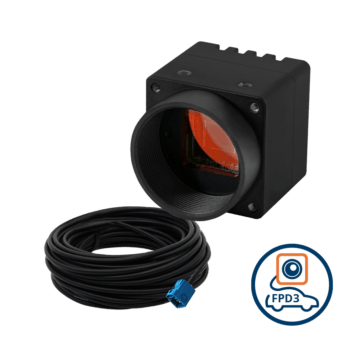
FPD-Link III Aluminium Enclosed Camera with onsemi AR0821 8MP 4K Rolling Shutter with Onboard ISP + IR-Cut Filter with C Mount Body
VLS-FPD3-AR0821-CB
- onsemi AR0821 8MP Rolling Shutter Sensor
- 4K HDR Imaging Capabilities
- Designed for Low Light Applications
- C-Mount for Interchangeable Lenses
- FAKRA Z-Code Automotive Connector
- Plug & Play with Linux OS & Yocto
- VizionViewer™ configuration utility
- VizionSDK for custom development
Benefits of high-resolution cameras
Image detail
High-resolution cameras substantially increase image detail, capturing intricate textures and patterns with precision. This level of detail is essential for applications like digital microscopy and medical diagnostics.
Digital zooming advantages
High-resolution images maintain their quality even when digitally zoomed in, making them valuable for subjects that are challenging to approach, such as wildlife photography. This capability allows vision engineers to crop an image while still preserving a high level of detail.
AI and ML performance boost
High-resolution images provide additional data for AI and machine learning algorithms, enhancing their performance in facial recognition, object detection, and automated image enhancement. This is particularly important in fields such as security and surveillance, where accurate identification is paramount.
Flexibility in cropping and composition
High-resolution images allow vision engineers to adjust cropping and composition during post-processing. This allows for capturing images with a broader composition and refining them to fit specific frames without sacrificing image quality.
Improved image analysis for research and development
High-resolution cameras have become essential for detailed image analysis in industries such as scientific research, environmental monitoring, and engineering. This is particularly important for data collection and analysis purposes. For instance, high-resolution satellite images can be utilized to track changes in the Earth’s surface over a period of time. Additionally, microscopic cameras with high resolutions can capture cellular-level details crucial for medical research.
Quality retention for large format outputs
Though not as common as in the case of consumer applications, industrial and commercial processes at times might involve using images captured by an embedded camera in large-size formats such as in a billboard or digital signage. In such scenarios, a high-resolution image can make a difference by retaining the quality even while enlarging.
Popular applications of high-resolution cameras
Here’s a closer look at some of the popular applications of high-resolution cameras in embedded vision:
Smart traffic systems
High-resolution cameras play a critical role in smart traffic systems by monitoring traffic flow, detecting incidents, and managing congestion. While not all systems require ultra-high resolutions such as 8MP, many benefit from at least 5MP cameras for clear image capture. These resolutions are adequate for tasks such as license plate recognition, vehicle classification, and tracking the movement of pedestrians and cyclists, ultimately contributing to safer and more efficient urban mobility.
Digital microscopy
Digital microscopes heavily rely on high-resolution cameras to observe microscopic subjects that are invisible to the naked eye. These cameras enable the capture of images at high magnifications with exceptional clarity, making them indispensable tools in scientific research, education, and quality control within manufacturing processes.
Medical diagnostic devices
Advanced cameras are essential components of various diagnostic devices in the medical field. For instance, retina scanners are employed in ophthalmology to capture detailed images of the retina, aiding in diagnosing conditions such as diabetic retinopathy, glaucoma, and macular degeneration. Similarly, skin scanners are utilized in dermatology to examine the skin’s surface for signs of disease, conduct skin cancer screenings, and perform cosmetic evaluations. Wound measurement devices are used to accurately measure and document wounds, facilitating more effective treatment plans and monitoring healing progress. All these devices require high-resolution cameras for enhanced imaging.
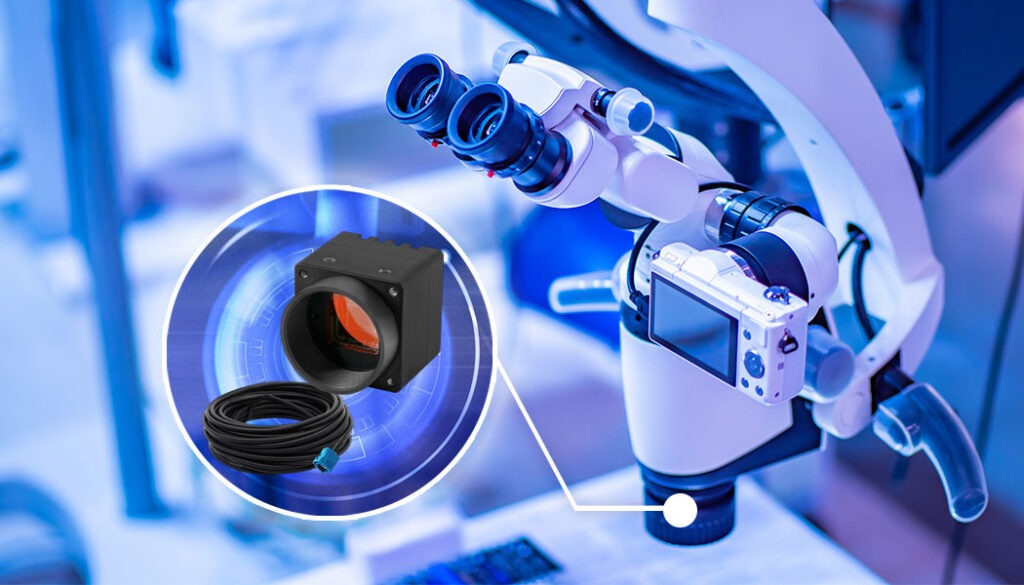
A digital microscope
Industrial handheld tablets
Handheld tablets with high-resolution cameras play a crucial role in inspection, maintenance, and inventory management in industrial settings. These cameras allow workers to capture detailed images of machinery, parts, and barcodes to support quality control measures, troubleshooting tasks, and logistical operations in precision-dependent environments.
Document cameras
Document cameras play a crucial role in educational and corporate environments by showcasing documents, books, or objects to a wide audience. Their high-resolution cameras guarantee clear and legible text and details when projected onto large screens, thus improving learning and collaboration. Document cameras are also used by people with low vision to project text and images onto a large screen or display.
Wrapping up
TechNexion is a leading provider of advanced imaging solutions, using cutting-edge, high-resolution sensors like the AR1335, AR0821, AR0822, and AR0521 in our product offerings. With options ranging from 13-megapixel sensors for ultra-detailed imagery to larger pixel sizes for superior low-light performance, TechNexion has a solution for various high-resolution imaging requirements. Learn more about our embedded vision solutions here.

